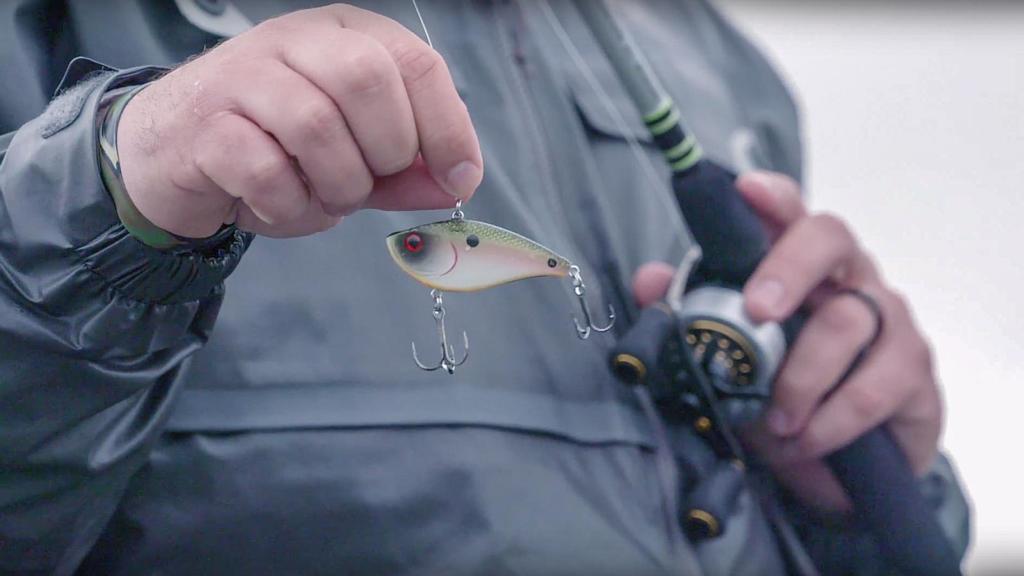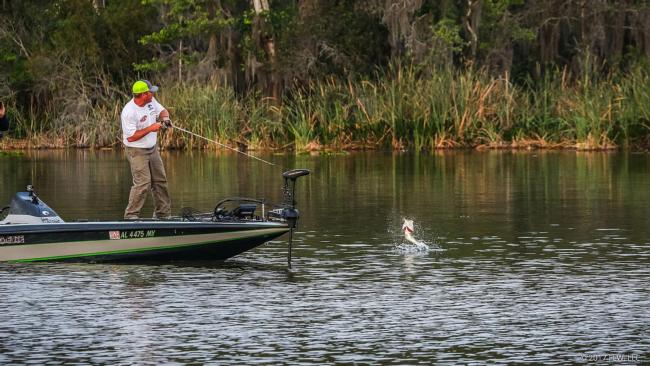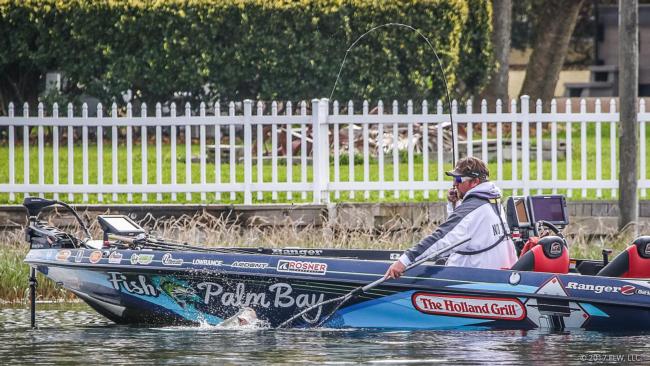When to Fish One Knocker Lipless Cranks
Plain rattler or loud knocker? Making the right choice can make a big difference.

“Six of one, half a dozen of another” is the surface-level description of how anglers decide which lipless crankbait style to throw. But is it really that random?
That familiar baitfish shape sporting a pair of trebles and lots of small rattles usually sounds like maracas. But drop a single high-density tungsten ball in that body cavity – usually referred to as a One Knocker (the models created by XCalibur and BOOYAH) or knocking-style – and “furious flurry” becomes “measured and methodical.”
It’s like two opposing medieval armies; one postured with thousands of screaming soldiers, the other calmly motivated by an ominous war drum.
Fairly so, pros such as FLW Tour rookie Bradley Dortch, winner of the Harris Chain event, describe the general approach to choosing between the two as rotating between them until fish response indicates some preference. That plan will eventually get you where you need to be, but looking a little deeper, investing a little more analysis can help us identify situational cues that might call the knocking-style lipless bait into action sooner.
Rock the knock
Consider first how the knocking bait’s deep, resonating sound makes a sharper sonic impact, much like hammering a nail reverberates throughout a building. In calm, well-lit moments, either bait style may tempt ’em, but low-visibility, windy, choppy conditions are when the knocking bait owns the room.
“I like the One Knocker a little better when the water’s a little dirtier,” says Dortch, who earned his victory largely with a chrome XCalibur XR50 One Knocker and a Tennessee blush shad-colored BOOYAH One Knocker. “Also, I think in the thicker hydrilla the One Knocker seems to be the one that I end up with most of the time. I think it might be that loud noise brings them out of the grass a little better. It’s like a spinnerbait with a big Colorado blade.”
Dortch, who used to live in Florida but now calls southern Alabama home, says he’s seen a preference for the knocking bait in many Southeastern waters where he believes it likely mimics the deeper sounds of larger forage such as golden shiners, bluegills and shellcrackers (redear sunfish). By comparison, the traditional high-pitched rattling baits mimic the sounds of schooling shad.
Tour pro Andrew Upshaw says the Rat-L-Trap Knock-N-Trap is his choice for post-frontal conditions when that dreaded barometric pressure spike and bluebird skies have the fish “acting weird” and not biting. It’s also his choice when the seasonal bombardment of prespawn grass trappin’ can leave the fish shell-shocked, yet notably susceptible to shad-profile baits with that sultry knock.
“The sound of a Knock-N-Trap is better closer to the spawn when fish have been conditioned to the sound of an original Rat-L-Trap,” he adds.
Make it matter
As Tour pro JT Kenney notes, the fish might do a 180 on their sound preference from one day to the next. So even when they’re digging the full rattle symphony, the “something different” factor can keep the party rocking.
Upshaw agrees. A knocking bait will often earn him a few more bites once the rattling baits wear out their welcome.
“If I’m on a Trap bite, I usually have five Traps rigged, one of which is always a Knock-N-Trap as my ‘cleanup Trap,’” Upshaw says. “I usually start with an Original, and then go to the Knock-N-Trap.”
Regardless of primary or back-up status, when the fish are on one type or the other, there’s no question they’ll choke it when you make the right choice. And it’s this truth that helped push Dortch across the Harris Chain finish line.
“In Harris, I was having trouble keeping them on,” he says. “When they were eating good, it didn’t seem to matter between the One Knocker and the rattling bait, but when the bite was tough and I had to make them react to a bait, they were eating the one knocker better.”

